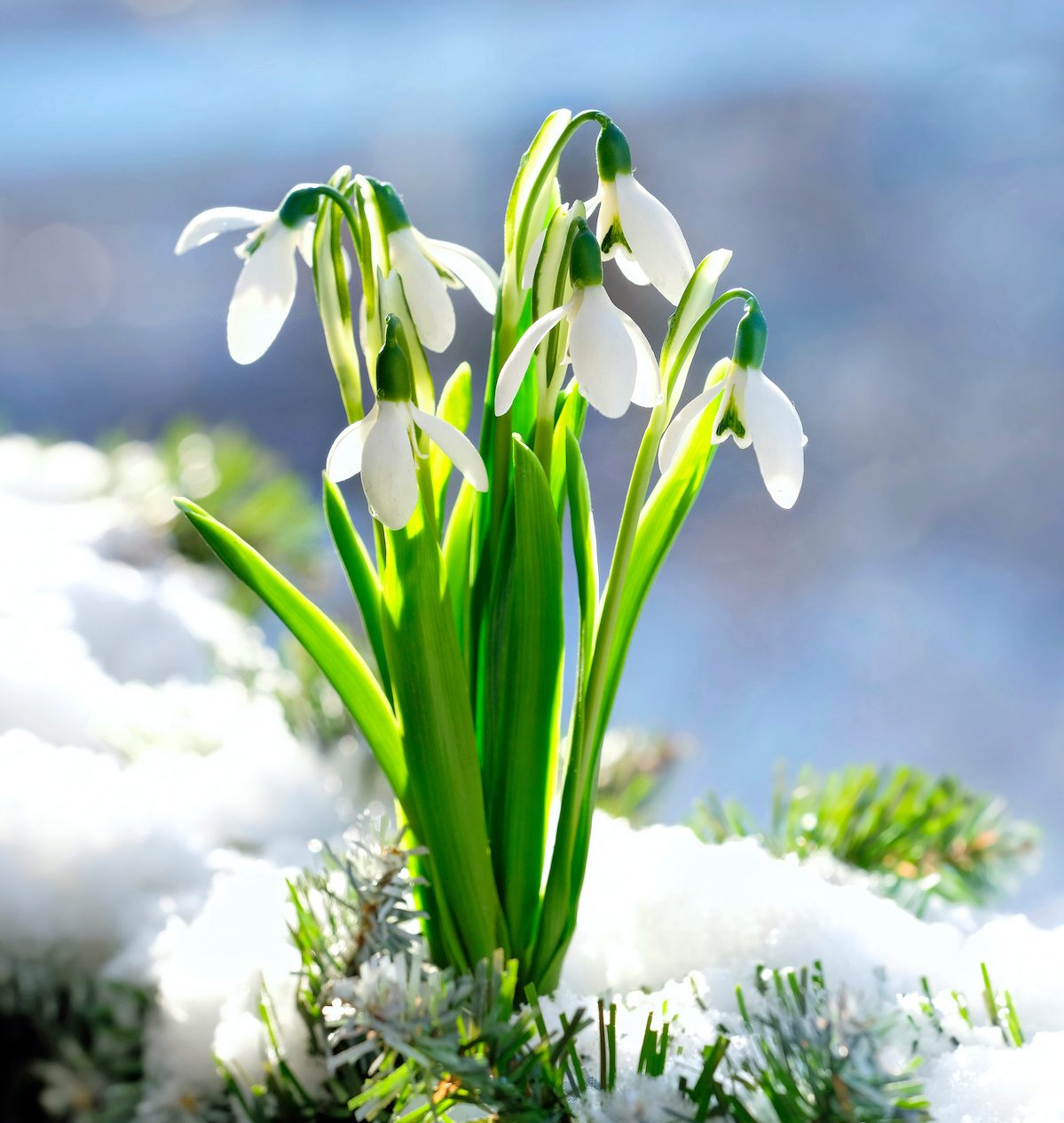When you plant snowdrop flower bulbs in your garden, you can look forward to blooms as early as late winter!

Snowdrop Flower (Galanthus) Growing Guide

On This Page
Benefits of Snowdrop Flowers

- Common name: Snowdrops
- Botanical name: Galanthus species
- Zones: 3 to 7, 8 for select species
- Light needs: Full sun
- Soil: Rich, well-draining soil
Among the earliest of spring flowers to greet us, snowdrops (Galanthus spp.) may be tiny, but they deliver lots of flower power. The nodding flowers delight humans and feed pollinators in late winter, when few other flowers are blooming. Snowdrop flowers are easy to grow, often expanding to make a sizable patch.
Snowdrops range from 3 to 6 inches tall for the common snowdrop (Galanthus nivalis) to 6 to 12 inches tall for the giant snowdrop (Galanthus elwessii).
Virginia-based Brent and Becky’s Bulbs has been growing bulbs since 1900. While lesser-known to the wider public, co-owner Brent Heath says Galanthus bulbs have a passionate following among bulb fanciers. “There are people who collect them called galanthophiles. Some spend dramatic sums of money for a bulb the size of your thumbnail.”
However, there’s no need to seek out the rarest snowdrop flowers for your garden. Brent sees no significant difference in performance among named cultivars but says some species do better than others. In the Southeast, where heat and humidity can challenge some snowdrops, he calls out Galanthus elwesii. His company’s catalog denotes high performers with hearts.
When and Where to Plant Snowdrops
The best time to plant snowdrop flower bulbs is in early fall, when nighttime temperatures have cooled to 40 to 50 degrees Fahrenheit. Snowdrops need full sun while growing in spring, but not during the summer, so they are happy under deciduous trees. They also need a cold stratification period below 20 degrees.
They prefer rich soil, and like many bulbs, they require excellent drainage. Because of this, take care that their bed or pots dry out in summer while they are dormant.
“Bulbs like we humans,” Brent says. “We like sleeping in a dry bed.”
Snowdrop flower bulbs grow well through groundcovers and in rock gardens, and display beautifully on the edge of paths or in raised planters where their unique charm can be appreciated.
Brent suggests planting the bulbs about 3 inches deep and 1 to 4 inches apart, keeping them lightly watered while growth is underway. Once planted, it’s best not to dig or move them unless you decide to divide them right after flowering.
Fertilize with bulb fertilizer if desired at the first sign of spring shoots or right after blooming.
When Do Snowdrops Bloom?

Snowdrops usually bloom close to February but can bloom earlier in warm weather. You can also force the bulbs for an indoor display, which requires 15 weeks of chilling time at 35 to 45 degrees in a refrigerator, unheated garage, or cold frame.
Are Snowdrops Perennials?
Unlike tulips which can be finicky, snowdrops are reliable perennials given proper sun and soil conditions.
Do Snowdrop Flower Bulbs Multiply?
Several Galanthus species spread slowly and steadily both by making new bulbs and by seed spread by birds, says Heath. A small clump can become a colony over several years if left undisturbed. “If you plant one and are patient, in five or 10 years you’ll have a big clump,” he says.
Do Snowdrops Attract Pollinators?
Snowdrops are a great choice to extend your garden’s value for bees and other insects in a lean time of year.
“They are visited by pollinators in early spring when there aren’t a whole lot of plants with nectar and pollen available,” Brent says.
Pests and Diseases
Like their cousins in the Amaryllidaceae family, daffodils (Narcissus), Summer snowflake (Leucojum), and onions (Allium), snowdrops contain bitter-tasting toxic alkaloids making them rodent- and deer-resistant plants.
Moles and squirrels can disturb and move them while digging, but this is usually a minor issue. Some birds may be attracted to the blossoms and peck them off.
Snowdrops are rarely troubled by disease.
About the Expert
Brent Heath, co-owner of Brent and Becky’s Bulbs (brentandbeckysbulbs.com) in Gloucester, Virginia, has been awarded gold medals from many organizations in the horticultural industry. He is a daffodil hybridizer as well as a naturalist. He helps other gardeners understand that gardening in an earth-friendly way benefits the bees, birds, and butterflies as well as the plants in the garden while preserving the earth for future generations.





















